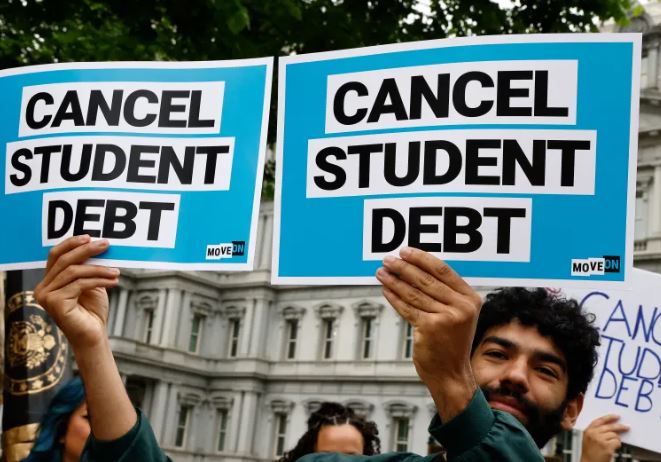Biden’s new student loan repayment proposal is based on income and could reduce or end payments for some borrowers
The Joe Biden administration is pushing another approach to addressing the student debt crisis, while its flagship initiative, a plan to forgive up to $20,000 in student loans per borrower, remains in legal limbo, awaiting a ruling from the conservative-leaning Supreme Court.
Even if the courts strike down the debt-forgiveness effort, Plan B unveiled by the Department of Education in a statement Tuesday could help millions of borrowers by revising repayment plans based on income.
“Today, the Biden-Harris administration is proposing historic changes that would make student loan repayments more affordable and manageable than ever before,” Secretary of Education Miguel Cardona said in a statement.
The income-based repayment plan also addresses some of the worst student debt traps, such as “negative amortization,” which is what happens when a person’s loan balance continues to grow despite consistently making payments.
The plan to reform income-based repayment (IDR) plans was first announced in August, but fell behind the Biden administration’s plan to forgive up to $20,000 in debt per borrower.
But with the student debt relief program halted by legal challenges, the Education Department said it is moving forward with the other part of its plan and will revise IDRs with the goal of helping low- and middle-income borrowers.
A plan that can really lower student debt
A new student loan repayment proposal introduced by the Department of Education on Tuesday would lower monthly payment amounts for some Americans and stop payments altogether for others.
The Department of Education’s changes to the existing income-based loan repayment (IDR) plan could provide student loan relief after the full payment pause is lifted, which has been extended through the end of June 2023.
The new regulations would allow borrowers who earn less than about $30,600 a year to make $0 monthly payments on their federal student loans, effectively stopping them.
The same effective break would apply to families of 4 earning less than $62,400 per year.
The changes would also cut monthly payments on undergraduate loans in half for borrowers who earn more than those annual amounts.
The Department of Education estimates that the changes would reduce future borrowers’ loan payments by 40%, while low-income borrowers’ payments could be reduced by 83% less.
It is not known when the changes will be implemented, although they will be subject to public comment for 30 days after their publication in the Federal Register on Wednesday.

